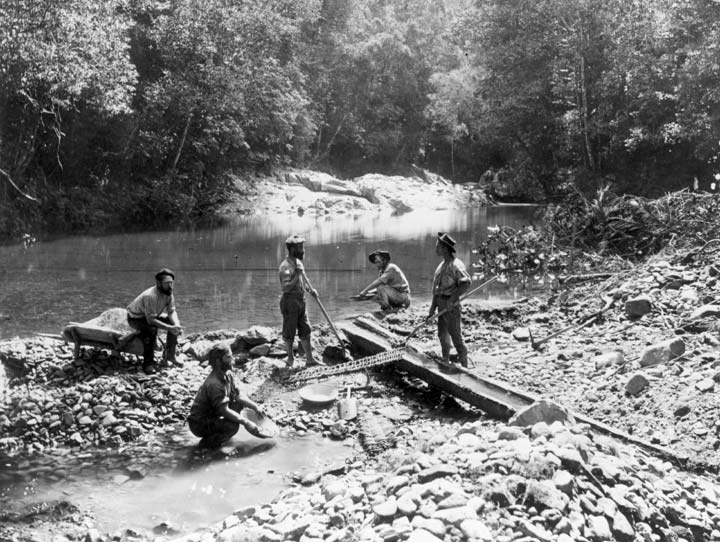 Panning for gold on the Mulgrave River, c1888
Panning for gold on the Mulgrave River, c1888
TLF ID R7997
This is a black-and-white photograph showing five miners prospecting for alluvial gold on the banks of the Mulgrave River in Queensland. Two of the men hold shovels and stand by a sluice, two others pan for gold and the fifth rests on a wooden wheelbarrow. Several other mining implements are in evidence - a pan, pick, shovel and sluice. The men have rolled up their shirt sleeves and, in some cases, trousers and several are working barefoot. The River is narrow, with rock-strewn banks crowded with thick vegetation.
